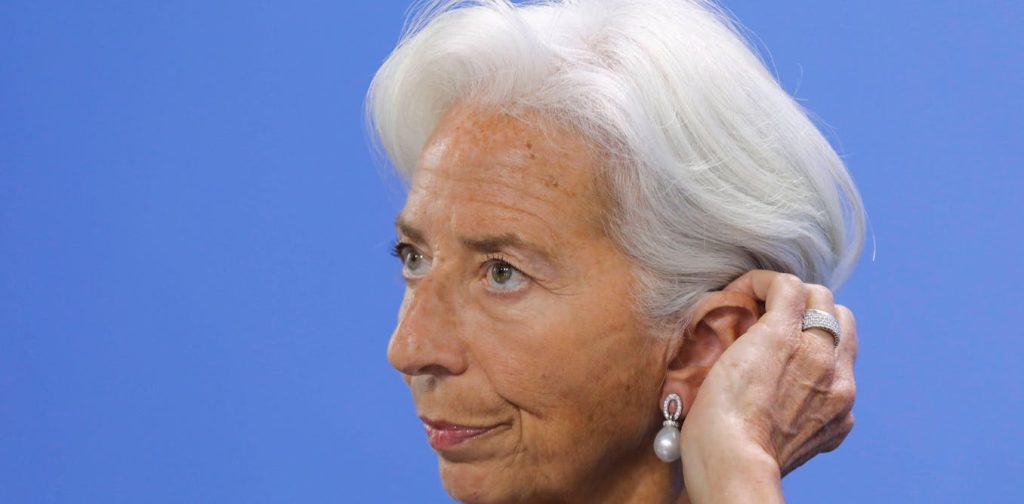In the middle of a market panic that has felled two US banks and pushed several others to the brink, the European Central Bank (ECB) has raised interest rates by another 0.5 percentage points. The ECB’s president, Christine Lagarde, had been warning this was necessary to bring eurozone inflation back to 2% by 2025. Unmoved by the fact that the banking crisis has been caused by higher rates, the ECB duly raised its main rate to 3% on March 16.
Lagarde acknowledged that several members of the ECB governing council were reluctant to support another hike, preferring to wait at least until the situation in the banking sector becomes clearer.
The markets had been expecting the ECB to hold off on further hikes for the time being. Yet they responded positively to the move, with the German DAX index barely changing and France’s CAC 40 up on the day. So why didn’t it cause turmoil?
Banks and higher interest rates
Central banks have raised interest rates to their highest levels in 14 years in response to high inflation in the past year. Both sides of retail banks’ balance sheets are affected by these changes.
On the liability side, rate hikes make it more expensive for banks to borrow. In the years before the global financial crisis of 2007-09, they relied significantly on short-term debt to finance their operations. This put them at risk of suddenly running out of money if their nervous lenders took flight, which brought down the likes of Northern Rock.
After the crisis, regulators established minimum liquidity requirements for banks, which have helped to make them more stable. However, rapid increases in interest rates can still adversely affect their access to liquidity – as we have seen with Silicon Valley Bank.
Anthony Eve/Alamy
The asset side of bank balance sheets refers to how they use their funds. Banks give loans to customers and companies, while much of the rest is held in the form of supposedly safe investments like government bonds – but the value of these has been reduced by rising interest rates.
Retail banks’ main purpose is to use short-term deposits to make successful long-term investments that enable them to lend more, while always having enough to give depositors their money back. Unfortunately, this makes banks increasingly vulnerable to falling asset prices and deposit withdrawals as they grow.
Silicon Valley Bank (SVB) needed to raise more capital because interest rates had reduced the value of its holdings in government and corporate bonds, with the latter also dragged down by the tech industry downturn. When depositors suddenly panicked about whether SVB was financially viable, it triggered a bank run.
SVB’s quick collapse then caused fears to spread that other banks could be in similar trouble, prompting a heavy sell-off in bank stocks. New York bank Signature also collapsed, while California-based First Republic has needed a bailout.
Basel III and deregulation in the US
The evidence from previous banking debacles such as the 2007-09 crisis is that central banks need to cut interest rates to restore stability in such situations. In the wake of the SVB crisis, this is why the markets changed their assumptions almost overnight about interest rates, from expecting a few more hikes to assuming rates are now near their peak. This was despite inflation remaining stubbornly high, pointing to a need for more hikes.
The reason the ECB has not done what was expected is because it believes that the banks in the euro area can cope with more rate hikes. This is because they are following the tougher capital and liquidity requirements known as Basel III, which were gradually implemented by regulators after the global financial crisis.
These include tougher funding requirements for the world’s 30 largest banks, since they are considered globally systemically important – meaning they are such vital cogs that their failure would threaten a much wider collapse, like when Lehman Brothers fell in 2008.
The Basel III requirements aim to establish a level global playing field. But countries have still had to introduce them via their own legislation, making any adjustments they think necessary for their banking sector. In the US, the stricter rules were originally applied by the Dodd-Frank Act of 2010 to all American banks with at least US$50 billion (£41 billion) in assets.
In 2018, however, amid concerns that these requirements were preventing banks from lending enough to the economy, the US government decided to deregulate. Now, only banks with at least US$250 billion in assets must follow the tighter rules, making mid-sized banks like SVB more vulnerable. Considering that global banking is largely interconnected because banks lend money to one another, even a mid-sized collapse can threaten the wider global banking system. It’s still unclear what the collateral damage will be over SVB.
Ringo Chiu
The euro area banking rules were not relaxed in same way, which is why the ECB believes EU banks can cope with more rate rises. The ECB directly supervises 111 significant banks of its member states that hold about 82% of the banking assets in the area.
As of 2022, the EU banks held between 2 and 3 percentage points more risk-adjusted capital than US banks, which is significant. While Credit Suisse has also run into trouble in recent days, and has needed extra funding from the central bank of Switzerland, it was already struggling for various unconnected reasons. UK banks have similar capital adequacy levels to EU banks.
It now appears that the US made a major mistake by loosening its banking rules in 2018. The ECB is now in a much better position to fight inflation than the US Federal Reserve. The Fed has already had to loosen monetary policy by setting up a facility to lend to US banks using their devalued bonds as collateral, and it probably has much less room for manoeuvre over interest rates when it meets to decide whether to raise them in the coming days.

